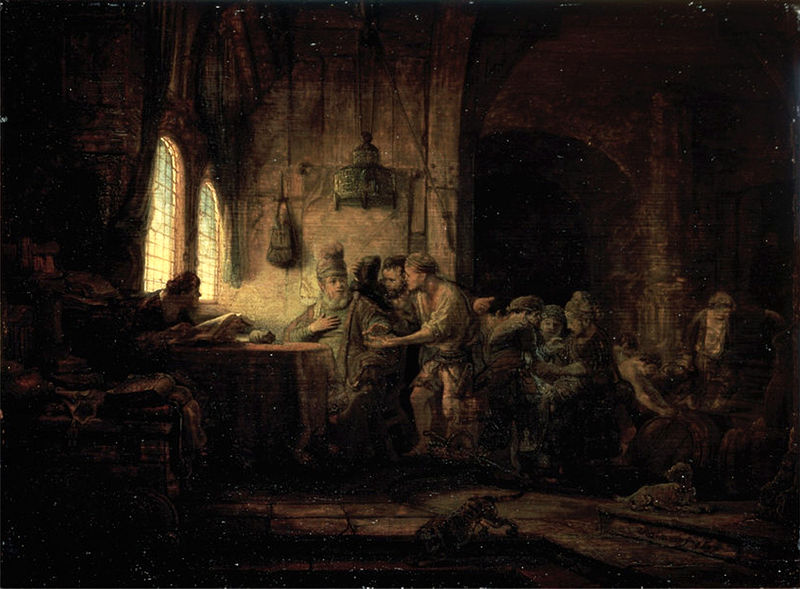Preparing for Penance

Every year, the Church’s calendar contains a natural transitionary period between Epiphany and Lent called Gesimatide, also known as pre-Lent or Shrovetide. Septuagesima is the name for the first Sunday in this in-between time that officially marks the ninth Sunday before Easter and the third Sunday before Ash Wednesday. The name Septuagesima is Latin for “seventy,” since the Sunday falls roughly seventy days before Easter.
Following Septuagesima are two other Sundays called Sexagesima and Quinquagesima, Latin for “sixty” and “fifty.” Accordingly, these Sundays also fall roughly sixty and fifty days before Easter, respectively. The seventeen-day period of Gesimatide also comprises the Carnival and Mardi Gras season, which culminates on Shrove (Fat) Tuesday.
Gesimatide is significant because it is meant to prepare Christians for the upcoming Lenten season and remind them that it is important to be spiritually and physically ready to observe the Church’s foremost period of penitence. By appropriately respecting and honoring the tradition of the pre-Lent Sundays, the early Church made it impossible for one to forget that Ash Wednesday is coming or to miss the beginning of Lent. Thank goodness!
In this way, Septuagesima marks the beginning of many Lenten practices in the home and the parish. The Alleluia and the Gloria are omitted during the Mass. Pastors don their purple vestments, and parishioners start to eat up the dairy and meat in the houses, making themselves ready for the coming fast. All in all, Gesimatide is characterized by the Christian’s whole body progressing towards the adoption of a more ascetic Lenten lifestyle.
Moreover, the Sundays in Gesimatide have a distinctly Lutheran flavor since the Gospel lessons of the three Sundays correspond to the famous three solas: sola gratia, solo verbo, sola fide. To begin with Septuagesima, the Gospel lesson is the parable of the workers in the vineyard (Matthew 20:1–16), a lesson that shows that we are saved by God’s grace alone. Sexagesima’s Gospel lesson is the parable of the sower (Luke 8:4–15), where we hear that our salvation is through God’s Word alone. Finally, on Quinquagesima, we hear of Jesus’ healing of a blind man (Luke 18:31–43), where our Lord’s own words show us that salvation is by faith alone. No wonder Lutherans love this season!
A Brief History
The observance of Septuagesima and Gesimatide has been observed throughout the history of the Church, reaching back to at least the sixth century. With such a long history, it makes sense that this pre-penitential season has developed its own unique culture and flavor. Yet sadly, the Lutheran Church is one of the only liturgical religious bodies that still celebrates this historic season, as the Roman Catholic Church officially dropped it from its calendar after the reforms of the Second Vatican Council.
Historically, Septuagesima has marked the beginning of Carnival, a celebration that lasts until Fat Tuesday, the day before Ash Wednesday. The roots of this celebration can be seen in its name, which comes from the Latin for carne levarium, or the “farewell to meat.” Thus, Septuagesima is the beginning of the Christian’s 17-day countdown to Lent, during which all the feasting foods in the house are consumed to prepare for the great fast.

Yet it also should be noted that the ancient Church’s emphasis on the importance of Septuagesima and its insistence upon the need to prepare for Lent presumes that the disciplines that Christians undertake for Lent are difficult and challenging for both the body and mind. As one source puts it, “one does not need weeks to get ready to give up chocolate, or to stop putting cream in one’s coffee.” However, the Church’s historic disciplines, such as fasting and almsgiving, do require some preparation and time to get one’s house in order. And that is exactly why there is a Septuagesima and a Gesimatide!

Collect
O Lord, we beseech Thee: favorably to hear the prayers of Thy people, that we, who are justly punished for our offenses, may be mercifully delivered by Thy goodness, for the glory of Thy name; through Jesus Christ, Thy Son, our Lord, who livest and reigneth with Thee and the Holy Ghost: ever one God, world without end. Amen.
Lessons
Resources
Issues, Etc. interview with the Rev. David Petersen on Septuagesima
The Gottesdienst Crowd interview with the Rev. Stefan Gramenz on Septuagesima
Propers found in Daily Divine Service Book: A Lutheran Daily Missal, edited by the Rev. Heath Curtis
References:
1. Hauck, Allan. Calendar of Christianity. Association Press. 1961.
2. Weiser, Francis X. Handbook of Christian Feasts and Customs: The Year of the Lord in Liturgy and Folklore. Harcourt, Brace & World, Inc. 1952.
Images:
1. Workers in the Vineyard, Carl Schuler, Germany, ca. 1850.
2. The Workers in the Vineyard, Christian Wilhelm Ernst Dietrich, Germany, ca. 1750.
3. Parable of the Labourers in the Vineyard, Rembrandt, the Netherlands, 1637.






I know that Septuagisima Sunday is the 13th of February, not the 20th. The 20th is Sexagesima Sunday. There may be more to this that I don’t know yet though. I’m not sure if it’s a mistake or if I’m just not fully informed yet. I would appreciate an explanation if the latter is the case. Thank you! I love this blog!
Abigail,
Thank you for this catch–yes, you are right! We made the correction.Thank you so much for letting us know and reading ATH!
Sincerely,
ATH